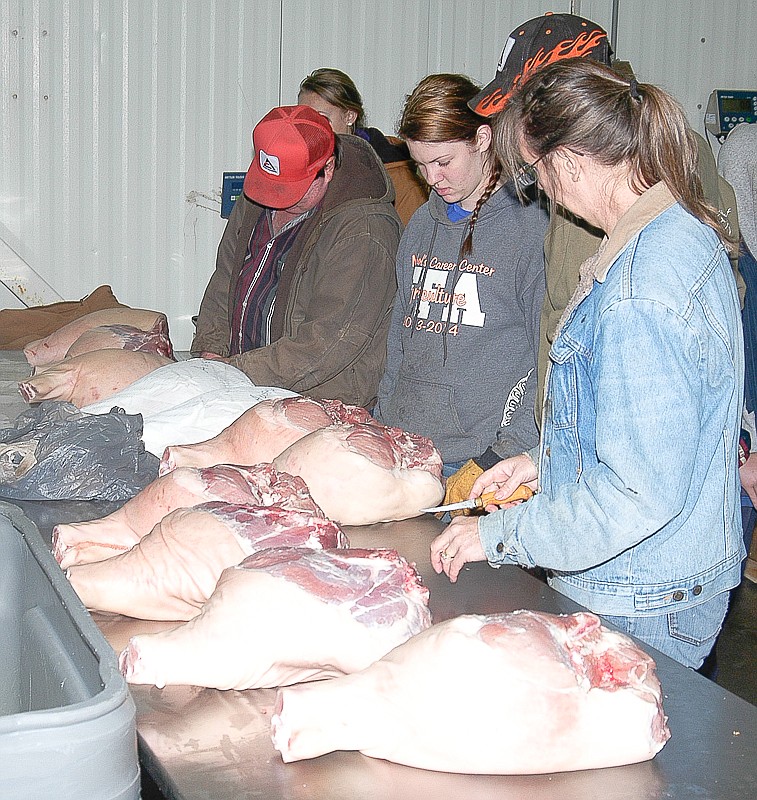Young people and parents descended on Burgers' Smokehouse Saturday, Jan. 9, braving the snow and ice which grew which made driving and walking conditions more treacherous as the day went along.
Beginning at about 5:30 a.m., 4-H and FFA students from around Central Missouri selected fresh hams to cure for either consumption or competition in one or more of the various fairs.
About 600 hams were distributed for curing this year. The fresh hams average about 25 pounds each with the cured hams weighing in the 19-20 pound range.
The cured hams will be entered in the county fairs. Some will go on to be entered in the Missouri State Fair. After selecting one or more hams, the young people begin the curing process by right at Burgers' by applying the "cure," a mixture of salts, brown sugar and black pepper. The hams are rubbed down with the mixture, with a few handfuls put on the meaty part on top.
The ham is then wrapped in butcher paper, placed in a stocking net (similar to cheese cloth) then hung on a rack. After about two months, the hams should be taken out of the butcher paper, put back in the net and hung up again. The curing process should be completed and the ham ready by the end of July, just in time for entering in the ham competition at the area fairs.
More than 25 4-H clubs and FFA chapters in mid-Missouri, including those from Moniteau County, pick out hams from Burgers' Smokehouse. The youth from Morgan and Moniteau County usually leave the hams at Burger's, while those from more distant areas usually take them home to hang and cure.
Getting the youth started on ham curing is one of the many things the local business does for the extended community. This effort on the part of Burgers' Smokehouse is important, since it helps preserve the knowledge of how to preserve meat without the major use of modern technology, such as freezers and vacuum sealing.
Curing or preserving pork, primarily using salt, has been done for at least the last 4,000 years. It is not as widespread a meat preservation method as it might seem to be to those in this area. Hams are cured in this fashion in southern Europe, parts of southern China and the south central parts of the United States. Settlers from Europe brought the practice to the United States.
When E.M. Burger and his family began curing hams for their own use in the 1930s, they used a recipe for dry cure brought from Germany by his mother. Since extra hams could be sold, the family increased the number cured until a building was constructed for the purpose in 1952.
In the 64th year of Burgers' Smokehouse, the company is known around the world for its meat products which are sold at the facility and in numerous grocery markets as well as via catalog and Internet sales.

